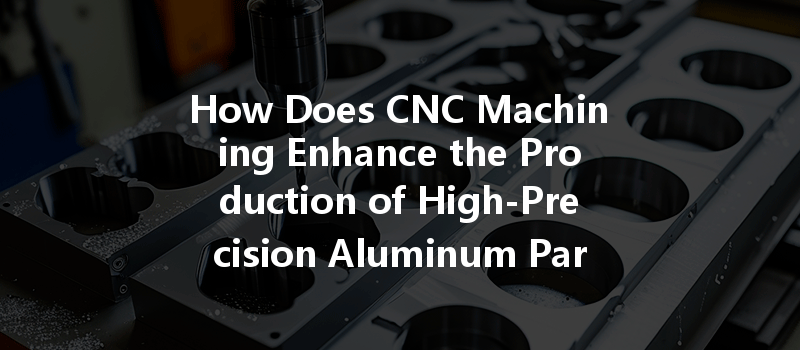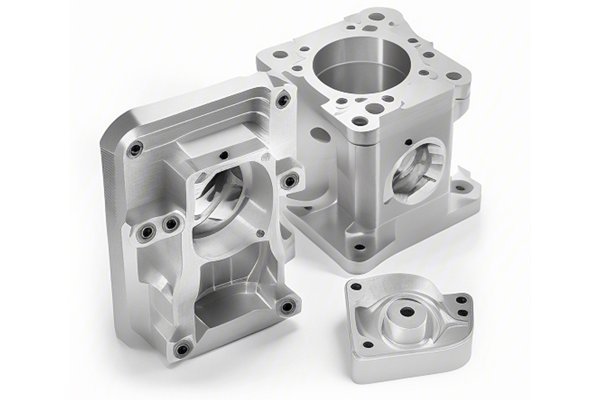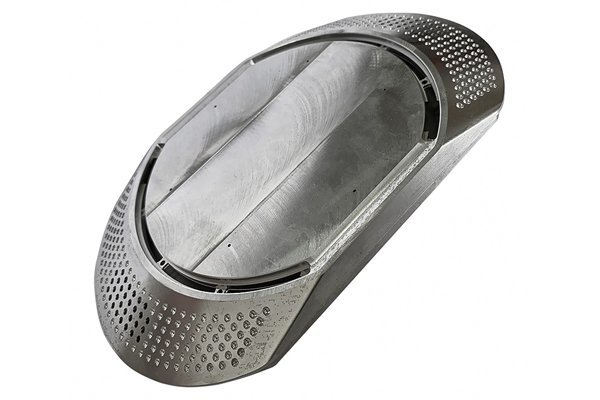Did you know that approximately 75% of the aluminum produced in the United States is used in manufacturing products that require precise machining? As industries continue to pursue higher standards for quality and efficiency, the significance of CNC (Computer Numerical Control) machining in producing high-precision aluminum parts cannot be overstated. In this blog, we will explore the integral role CNC machining plays in enhancing the production of aluminum components, the benefits it offers, and the advanced techniques utilized to ensure maximum precision.
Understanding CNC Machining
CNC machining is a manufacturing process that uses computer-controlled tools to create precise parts from a variety of materials, including aluminum. The process is automated and allows for the replication of intricate designs with a level of accuracy that manual methods simply cannot achieve.
CNC machines utilize various processes such as milling, turning, and drilling to shape materials, and can produce both simple and complex geometries. By inputting a CAD (Computer-Aided Design) file directly into the CNC machine, manufacturers can ensure that every detail is accurately mirrored in the final product.
The Importance of Precision in Aluminum Parts
Aluminum is a lightweight, durable, and corrosion-resistant material, making it a popular choice for many applications, including aerospace, automotive, and consumer electronics. However, the efficiency and performance of aluminum components significantly depend on their precision. That’s where CNC machining excels.
The CNC Machining Process for Aluminum
The CNC machining of aluminum parts comprises several key steps, all aimed at optimizing the quality and precision of the final product. Each step must be meticulously executed to ensure the efficacy of the process.
Before any physical machining begins, the process starts with an in-depth design phase. Engineers and designers create a CAD model of the component, specifying all dimensions, tolerances, and material requirements. This CAD model serves as the template for programming the CNC machine.
Once the design is finalized, the next step is to generate the G-code, which is the language that CNC machines understand. This code contains all the instructions necessary to guide the machine’s operation, including tool movements, feed rates, and machining sequences.
For high-precision parts, the right aluminum alloy is crucial. Various aluminum alloys have different properties—6061 offers excellent corrosion resistance and weldability, while 7075 provides high strength. Understanding these differences helps in selecting the most suitable alloy for each application.
Setup involves securing the aluminum workpiece to the machine bed and ensuring that the correct tools and parameters are in place. Tool selection is critical; specialized tools for aluminum, such as those with sharp cutting edges and appropriate coatings, can extend tool life and improve surface finish.
During this phase, the CNC machine executes the instructions from the G-code, removing material in precise increments. Processes like milling and turning can be seamlessly integrated to create complex geometries, grooves, and holes. High-speed machining often used in aluminum fabrication minimizes cycle times and enhances finishing.
Quality assurance is essential in aluminum machining. Once the component exits the machine, it must go through rigorous inspections using tools such as calipers, micrometers, and gauges to measure dimensions and tolerances. Advanced laser scanners may be employed for surface inspection and dimensional accuracy.
Advanced Techniques in CNC Machining for Precision Aluminum Components

As technology evolves, so do the techniques employed in CNC machining. To ensure high-precision results, manufacturers adopt several advanced strategies:
5-axis machining allows for more complex shapes and angles without requiring the operator to recalibrate the workpiece. This method reduces setup time and the number of projects, improving turnaround speed while maintaining superlative accuracy.
High-feed machining operates at high speeds with optimized tool paths, enhancing efficiency while minimizing tool wear and improving surface finishes. This approach is particularly beneficial for aluminum due to its malleability.
For highly intricate designs where tolerance is paramount, wire EDM offers an unbeatable solution. This non-contact method can cut through aluminum with extreme precision, creating intricate designs while leaving no thermal distortion on the component.
Getting precise threads in aluminum parts is vital for assembly. CNC machines equipped with tapping features can accurately produce threads in various sizes, ensuring that components fit together correctly while maintaining quality and strength.
Common Applications of High-Precision Aluminum Parts
High-precision aluminum parts manufactured through CNC machining find a wide array of applications across various industries:
The Future of CNC Machining for Aluminum Parts
As we look to the future, the landscape of CNC machining continues to evolve. Developments in AI and machine learning are paving the way for smarter machines that can adapt to changing conditions in real time. Predictive maintenance technologies are also emerging, minimizing downtime and optimizing production schedules.
Additionally, advances in materials science will likely lead to the development of new aluminum alloys with enhanced properties, opening up possibilities for even more specialized applications.
CNC machining is revolutionizing the manufacturing industry, particularly when it comes to producing high-precision aluminum parts. Its ability to deliver consistent quality, efficiency, and intricate designs marks it as an indispensable tool for various industrial applications.
In this blog, we have explored the entire CNC machining process—from the initial design phase through to quality assurance and the advanced techniques that enhance precision. By implementing these methodologies, manufacturers can meet the evolving demands of modern industries, ensuring that performance standards are consistently met.
As the industry continues to advance, the importance of understanding CNC machining methods, and how they apply to aluminum production, cannot be overstated. It is worth considering that adopting these practices not only improves product quality but also contributes to overall operational efficiency. In a competitive market, businesses equipped with cutting-edge techniques and an understanding of precision will thrive.
Whether you’re a seasoned manufacturer or just beginning to explore CNC machining, the insights shared in this blog will guide your journey toward achieving high-precision aluminum parts efficiently and effectively. Consider these techniques not just as trends, but as essential components of a strategic approach to modern manufacturing.






